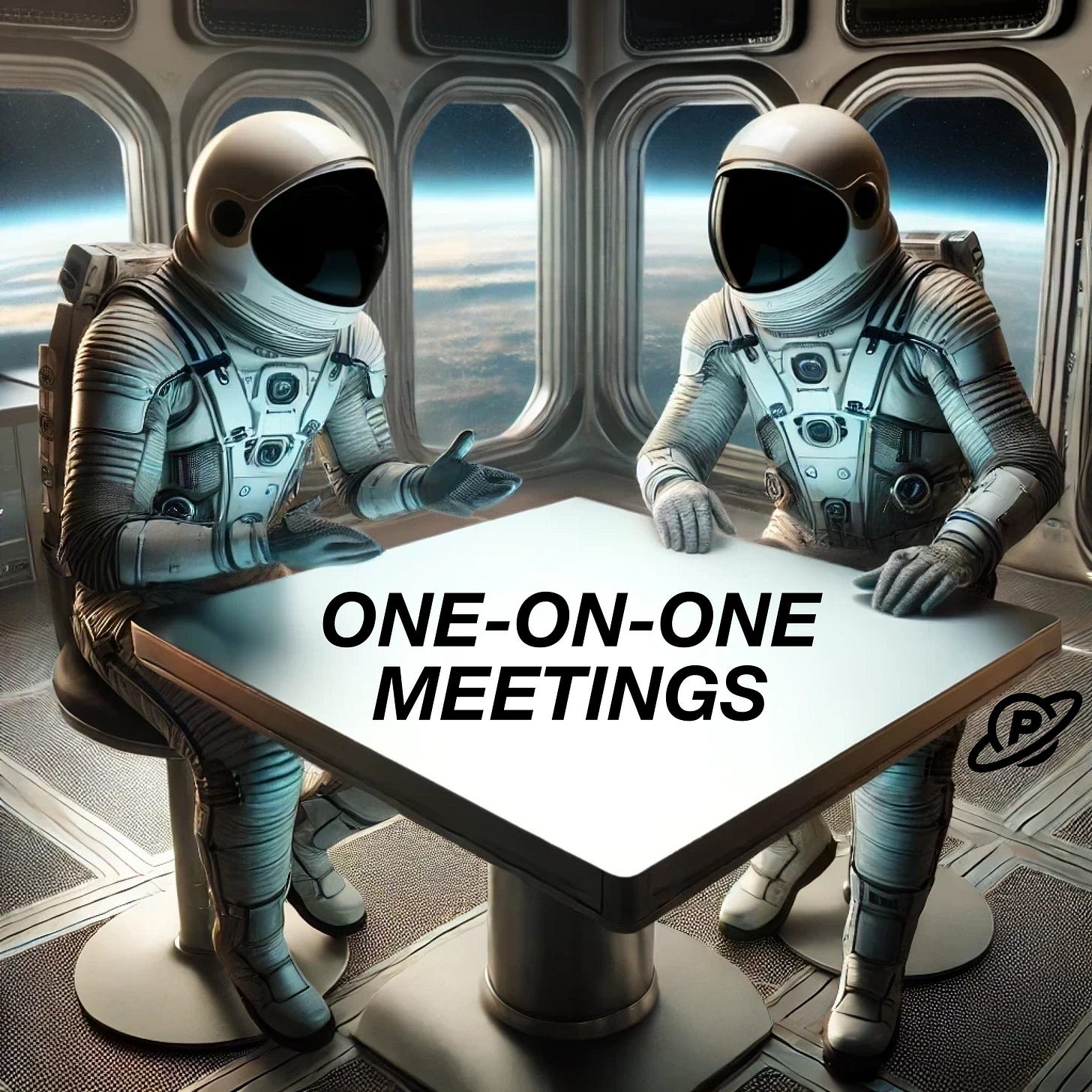On One-on-Ones - Insights From 1,500 Meetings
The perfect one-on-one doesn't exist, but we can strive for a good one.
One-on-one (o3, or 1:1) sessions with your team members are regular meetings, where the frequency of the meetings depends on the company or circumstances. During these calls you… get work done? Provide value? Guide team members? Provide feedback?
There is no one clear answer.
Most of the guidelines point out to:
Set recurrent slots in the calendar, never be late or reschedule at the last minute
Be present and use active listening, the meeting is for them not for you
Provide guidance, use this time to solve problems and address challenges
Have clear discussion points — or even: "No agenda, no attendance"
All of these are important. However, during my career, I had more than 1,500 one-on-one sessions, and in this article, I'll present non-obvious reflections which will help you get the most out of these meetings.
Context
I have led developers, as well as both technical and non-technical leaders, including senior leaders. My approach evolved over the years, but I found these aspects important to consider at every stage:
Purpose
Curiosity
Individualisation
Purpose
If your purpose of having o3 with your team member is: "because the company requires it, every 2 weeks" it's not a good purpose.
Purpose can be defined from many perspectives:
What do my team members need?
What is my goal?
What does the company want?
Having a purpose for meetings, even if not stated aloud but understood by the leader, helps to move things forward.
I had o3 that didn’t work and wasn’t addressing the purpose which in this case was to: empower architects within the company. We changed individual conversations to team meetings and it suited my goal, their goals and the company's goals.
Don’t be afraid to challenge the status quo for meetings or any other processes that don’t work. But to be able to question it, it’s good to understand their root cause of existence. Both teams and reporting lines can be changed and rearranged.
In practice: use the Five Whys method (asking ‘Why?’ five times for each answer) to find the real reason for a given one-on-one session. More on that in First-principles.
Curiosity
"Appreciate differences.
A conversation with a clone of yourself would be boring."
— Derek Sivers, "How to Live"
Being curious is a superpower. It helps us connect and learn from others. I was amazed at how much can be discovered through simple curiosity. I listened to AWS insights from Architects and discussed psychology with a leader with an academic background — all during one-on-one sessions.
Curiosity can't be forced or easily trained, as it comes from our worldview. Imagine seeing the person you’re talking to as equally interesting as yourself. After all, we often see ourselves as the most fascinating people in the world (myself included, also: egocentric bias)
Whether helping with setting goals, analysing progress, or even just listening to updates on their projects, be curious.
In practice: Curiosity isn’t a feature you can just switch on. But focusing on listening can help. In a virtual environment, some tools track each person's time speaking. I aimed for 60-70% on their side. I used the talk time extension for Meet.
Individualisation
People are different. We have different styles of communication and an initial set of expectations.
Don’t strictly follow guidelines on what questions to ask in one-on-ones. Instead, think about what questions will best serve the purpose of these meetings
I worked with people who took full ownership of presenting their updates and knew exactly when to ask for guidance, but I also worked with juniors who just followed the templates for the agenda that I prepared.
I've never published anything like my own manager's readme or guidelines on how to talk with me. I assumed it would kill the ability to try new ways of cooperating. Instead, I aimed to talk through expectations during our first meetings.
In practice: Have an open conversation about the shape of o3 meetings with your team members. Allow them to adjust it as needed to suit the purpose, even if it doesn’t align with your preferences. Manage expectations.
Summary
Purpose, curiosity, and individualisation are the three aspects of professional meetings I often return to. This combination can truly help us make the most of our one-on-one meetings.
What are your principles for having a good one-on-one?
Thanks for reading,
— Michał
Post Notes
Discover Weekly — Shoutouts
Articles that might help you explore new perspectives, which I’ve read recently:
"How to share knowledge between engineering teams" by Samuel Kollát and Anton Zaides
"5 Principles to be a professional developer" by Orel Zilberman
"Rising Above: What My Team Lead Taught Me About Problem-Solving (That ChatGPT Couldn't)" by Akos




It looks like I have a few things to talk with my manager on our next 1:1. Thanks for the insights, Michal.
Like this one Michal, thanks for sharing.
For me a successul 1-1, as any other meeting, should bring some action item. Otherwise, maybe the meeting can be replace for a email
what do you think?